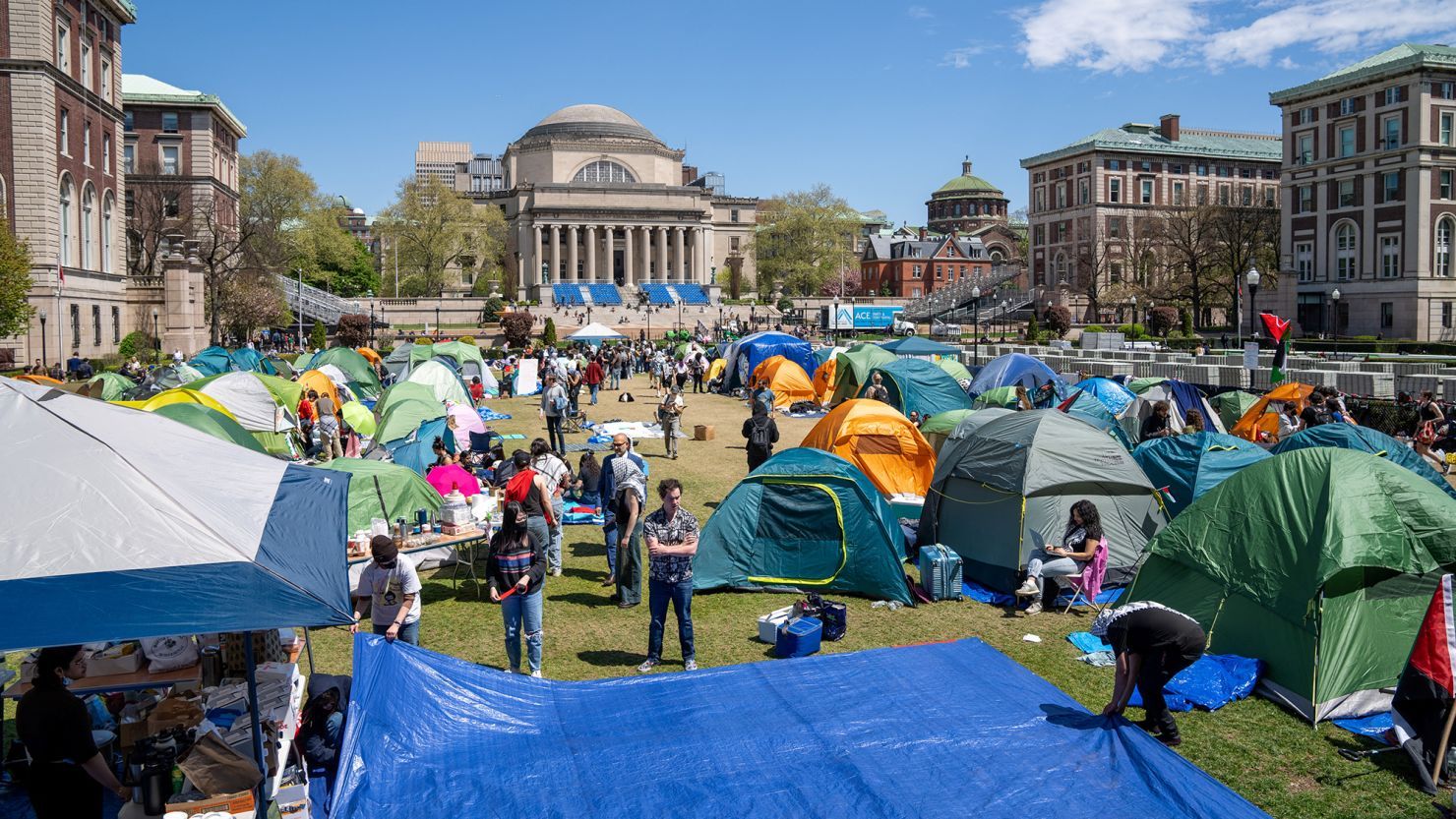 On April 24, 2024, protesters camped on the campus of Columbia University to support the Palestinians. Editor's Note of David Di delgado/Reuters: A version of this article first appeared in the "Reliable Sources" newsletter. Register the daily digest here to record the ever-developing media landscape. New York CNN —
On April 24, 2024, protesters camped on the campus of Columbia University to support the Palestinians. Editor's Note of David Di delgado/Reuters: A version of this article first appeared in the "Reliable Sources" newsletter. Register the daily digest here to record the ever-developing media landscape. New York CNN — In mid-April, when new york Magazine tried to report the pro-Palestinian student protests that swept through Columbia University, the feature editor in charge of the legendary publication designed an unconventional method.
Nick Summers, the editor, didn't send his special contributor to the Morning Heights campus, but typed an email to Isabella Ramirez, the editor-in-chief of Columbia Daily Spectator.
The spectator, a student newspaper that has been serving the university since 1877, has been reporting this story-Summers hopes to make use of his resource network, deep understanding of the campus community and the trust that his employees have accumulated among students and faculty for the May issue of new york over the years.
Summers told CNN by telephone on Monday: "From the beginning, it was clear that the Observer really dominated the report." "So, we have the idea to approach them and ask: Do you want to make the next cover bag?"
The final product, which will be published on Monday, is a special report on campus riots, which was completed in cooperation with the Observer. It includes oral history of the takeover of the camp and Hamilton Hall, portraits of pro-Palestinian and pro-Israeli demonstrators, and voting for 700 people in the campus community.
The report was not only written by student journalists, but also edited by Ramirez, who cooperated with Summers and another feature editor, Rai Speiss. These photos were taken by student journalists-including the cover photo taken by freshman Stella Lagos-in collaboration with new york photography director Jody Cohen.
 On April 30, 2024, protesters gathered at the gate of Columbia University to support students who set up roadblocks in Hamilton Hall. David Di delgado/Reuters "The depth of their coverage exceeded our expectations," said Summers, a former editor-in-chief of The Observer.
On April 30, 2024, protesters gathered at the gate of Columbia University to support students who set up roadblocks in Hamilton Hall. David Di delgado/Reuters "The depth of their coverage exceeded our expectations," said Summers, a former editor-in-chief of The Observer. The cooperation with the magazine also enables students to learn from top industry veterans. Quon told CNN that they are willing to pass on their suggestions to the next generation of journalists. Quon recounted a story about her visit to the campus to help with the photography process. She said that she introduced some students to top industry photographers, who took the time to offer their advice.
"It makes me warm," Kun said.
However, for student journalists, collecting reports from campus is not without challenges. The Observer's employees are obviously students-with the final exam approaching and the final paper due, the protest reached its climax. To add to the pressure, many student demonstrators have been reluctant to be interviewed by the media, expressing doubts about whether the news media accurately described their views.
 On May 5, 2024, in Rafah, south of the Gaza Strip, Palestinians inspected the scene of Israeli attacks on houses during the ongoing conflict between Israel and Hamas. Reuters/Alkhatim Khaled. Hatem Khaled/ Reuters related live reports that the Israeli military occupied the Palestinian side of the Rafah crossing.
On May 5, 2024, in Rafah, south of the Gaza Strip, Palestinians inspected the scene of Israeli attacks on houses during the ongoing conflict between Israel and Hamas. Reuters/Alkhatim Khaled. Hatem Khaled/ Reuters related live reports that the Israeli military occupied the Palestinian side of the Rafah crossing. This also gives The Observer an advantage over everyone else. Protesting students who want to talk to the media are more likely to trust their classmates than swarms of journalists from national and international news organizations.
Ramirez told CNN, "We are obviously more trusted than the domestic media that parachuted in and may not know the inside story."
"Since October 7th, we have been reporting this matter. Ramirez added: "We have been here before, during the period, and then we will come here." "I think this means that we have paid attention to this storyline even before the upgrade peaked. So it took us several months to establish contact with the organizers. "
For the reporter of Observer, there is a strong sense of responsibility to provide the campus community with continuous updates on the tension and political polarization. Therefore, they have devoted themselves to the report in the past few weeks.
In fact, when the camp was first supported on campus, Ramirez told CNN that student journalists didn't want to sleep at night. In the first few days, they tirelessly stayed at the scene. Finally, a shift system was implemented, allowing journalists and editors to continue to report the latest news of the protests around the clock.
Ramirez said: "Someone needs to do historical records and records."
Ramirez said that although The Observer kept releasing breaking news alerts, the cooperation with new york magazine made journalists "take a step back and explore a long form of media". She said that "the ability to do something incredibly comprehensive" added an important background to the historical record.
"I think it will stay with us forever," Ramirez said. "I hope it will stay in our community forever."